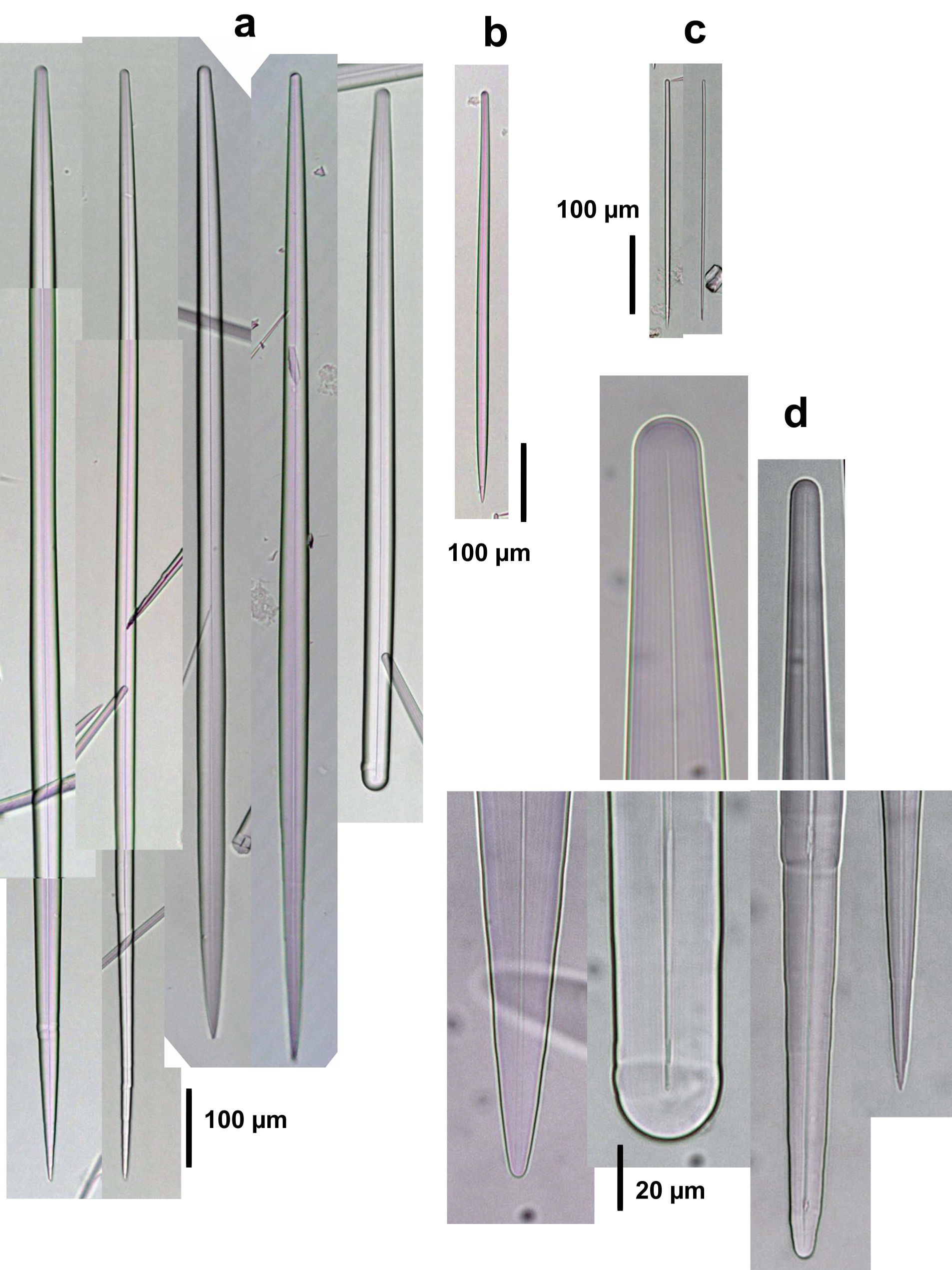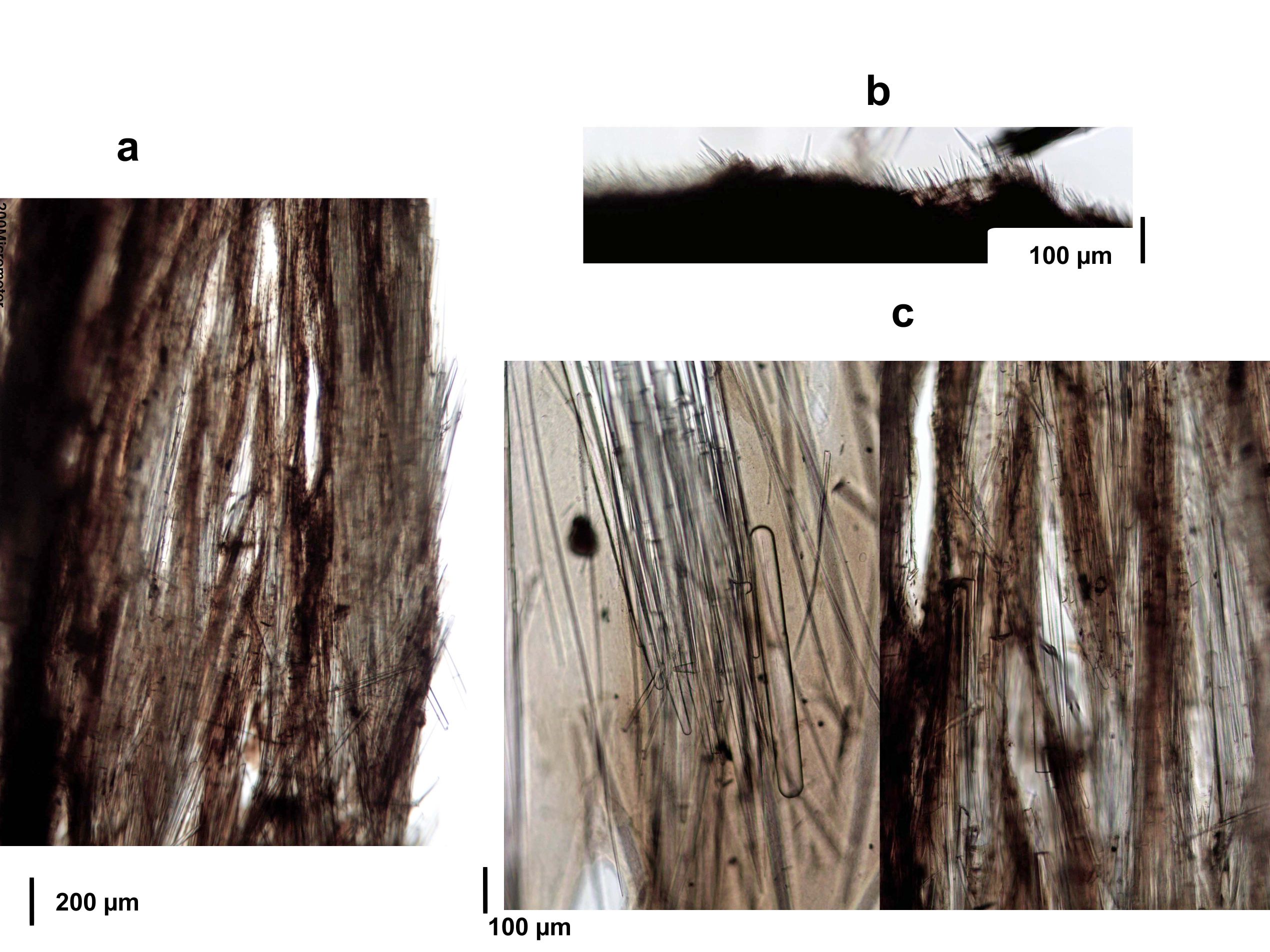the Sponge Guide - www.spongeguide.org
Observed Characteristics:
yellow
brown
massive
tough
United States
Species Description and Notes
Description: Massive, rounded, up to 10-30 cm in diameter and 10-15 cm thick. External color dull yellow beneath a rather transparent pinacoderm; interior yellowish. Surface when live even and smooth, sometimes undulated; the pinacoderm shrinks upon handling and the surface becomes tuberculated. Oscules dispersed, even, as part of the stretched pinacoderm, up to about 8-10 mm in diameter, usually with a darker rim. Consistency toughly compressible. Skeleton as ascending, closely packed tracts of spicules, difficult to separate and discern in thick sections; at the surface there is a palisade of erect spicules of the smaller size category. Spicules are slightly curved anysostrongyloxeas (=fusiform styles) with the thickest portion in the apical half, resulting in very narrow heads and thicker tips, usually acute or slightly blunt, sometimes blunt, like style heads. Spicules occur in 2-3 size categories difficult to separate; smaller ones are more frequently true styles. In the material available, from Florida, the larger two categories are 525-1525 µm long by 15-50 µm wide, and the smaller category 275-425 µm long by 4.3-10 µm wide.
Notes: This species was found under dock pilings in lagoonal settings. There is a great deal of confusion regarding how many species of Aaptos there are in the Greater Caribbean shallow waters, with names such A. pernucleata (Carter, 1870, also pictured here), A. duchassaingi (Topsent, 1889), A. bergmani de Laubenfels, 1953 and A. lithophaga (Wiedenmayer, 1977), plus species recently described from tropical NE Brazil by Moraes (2011), Aaptos glutinans, and by Carvalho, da Silva & Pinheiro (2013), A. hajdui and A. potiguarensis. We found three distinct species of Aaptos growing together in the Florida Bay side of Key Largo, all pictured here, one black, with large spicules (A. pernucleata), one dark brown and tuberculate, with smaller spicules (Aaptos sp.2), and the third light brown and smooth with slightly thicker spicules (Aaptos sp.3). Once collected, fragments of Aaptos sp.3 were very similar to those of co-occurying Aaptos sp. 2, but we decided to keep the two species separated from their live aspect and the generally larger and thicker spicules of the former. (Aaptos sp.3 needs to be compared to Aaptos bergmani, which is smooth, golden brown to brown externally and rich yellow internally (de Laubenfels, 1950), but also to Brazilian A. hajdui (orange) and A. glutinans (yellow). There is need for comparisons of all western Atlantic Aaptos species’ types, but also of specimens from the same geographical area, owing to regional variation in spicule size.
Tissue and Spicule Images

Spicule Images: a) to c) Anysostrongyloxeas (fusiform styles) in 2-3 categories; d) endings of anysostrongyloxea. Sample from the Florida Bay side of Key Largo.
Source Specimen: http://www.spongeguide.org/ thumbs/00117/02095.JPG

Tissue Images: a) Ascending spicule tracts near the surface; b) smaller styles protruding at the surface; c) magnification of an ascending tract in the choanosome showing a rare strongyle modification of the anysostrongyloxea. Sample from the Florida Bay side of Key Largo.
Source Specimen: http://www.spongeguide.org/ thumbs/00117/02095.JPG
Images
Aaptos sp.3-"light brown smooth"
Location: United States, Florida Keys
Photographer: Sven Zea
Location: United States, Florida Keys
Photographer: Sven Zea
Location: United States, Florida Keys
Photographer: Sven Zea
Location: United States, Florida Keys
Photographer: Sven Zea